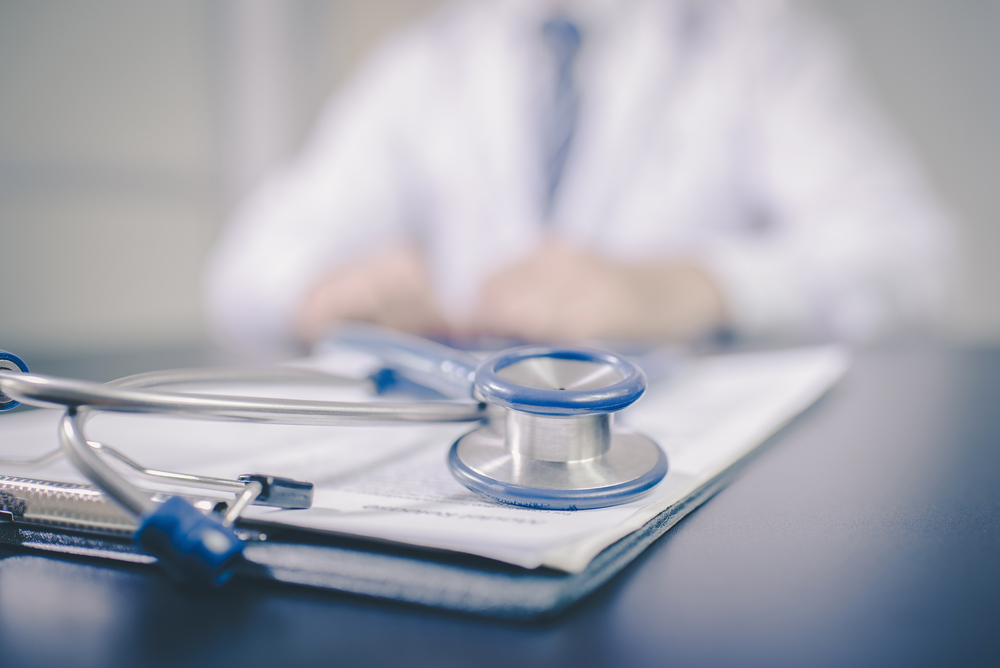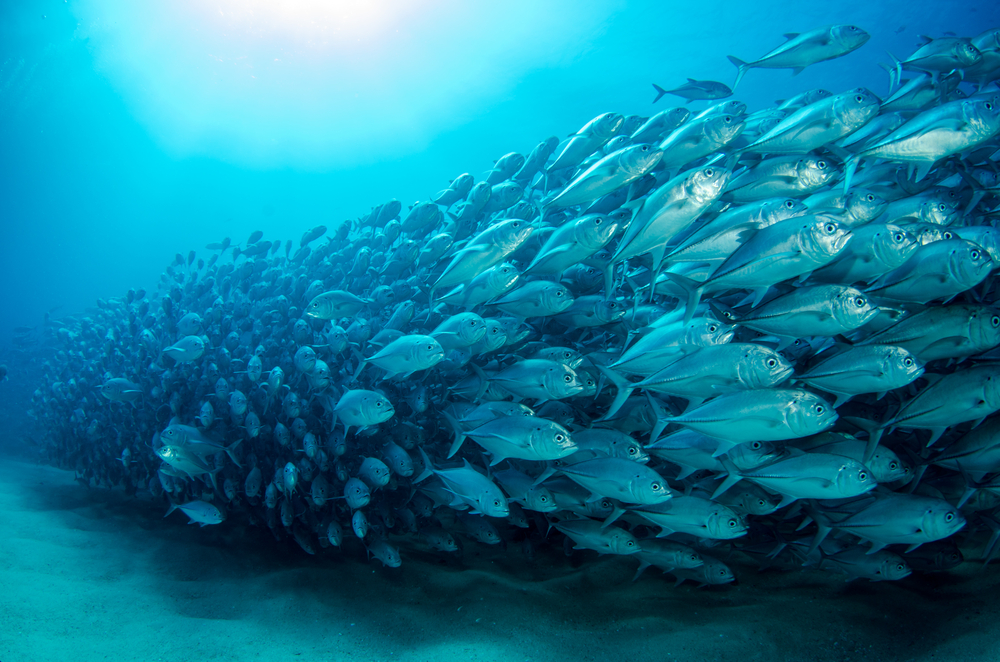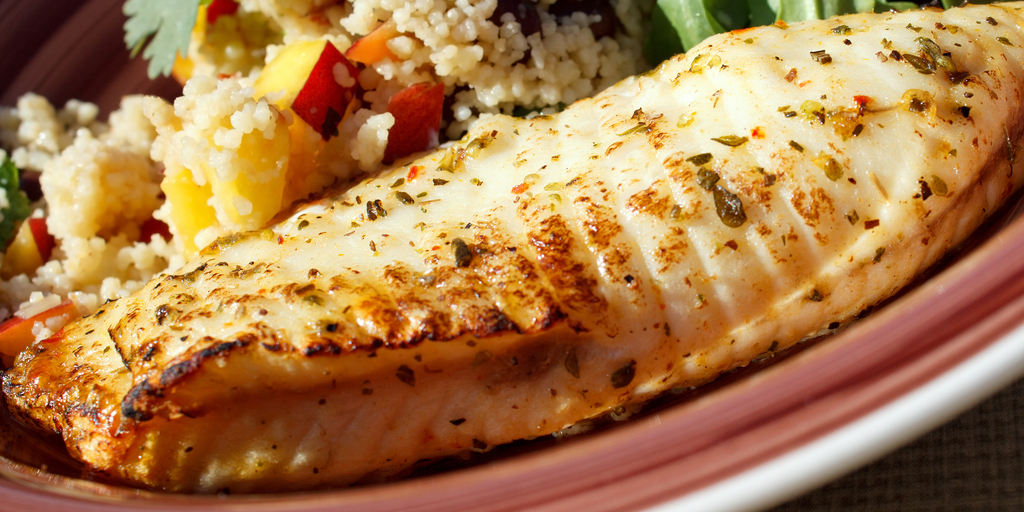All posts by NFI Media
New Study Finds Fat Vital for Health
New Study Tracks Diets of Thousands across 18 Countries
There’s a large new study making waves about the relationship between dietary fats, carbs, and health. The research found that higher fat intake was associated with lower risk of death. Inversely, higher carbohydrate intake was associated with a higher risk of death.
Hyperbolic headlines about the new research are suggesting that a “low-fat diet could kill you” accompanied by images of double cheeseburgers, pizza, and buckets of butter.
The Real Take-Away
It’s extremely doubtful that any Registered Dietitian on planet Earth will see this study and begin urging clients to massively increase their intake of bacon and ice cream.
The real take-away from the study is confirmation that fat does have an important role in the diet. But it’s not just the amount that matters, to confer real and lasting benefits the type of fat is important too.
For a long time, scientists have known fish and shellfish are the best dietary sources of omega-3 fatty acids, particularly DHA and EPA, in the American diet. These healthy polyunsaturated fats are necessary for myriad functions, such as baby brain and eye development during pregnancy. Even better, consuming these healthy fats are among so many other benefits of eating fish.
Better Reporting
Markets Insider digs deeper than other outlets and includes reporting on other studies about fats and health as well.
They quote a Harvard nutrition professor who authored a 2016 study as saying:
- “Not all fats are created equal.”
- “We should eat more good ones from fish and avocados, instead of animal fats.”
Similarly, News.com.au provides tips for getting the recommended amount of fat in the diet:
- “The best evidence available suggests that a couple of tablespoons of extra virgin olive oil, in addition to fat coming from nuts and seeds, oily fish and avocado will give us a daily intake of 30-35 per cent of predominantly good fats.”
The Benefits of Eating Fish
One of the easiest ways to ensure Americans get sufficient (healthy) fat in their diet is by eating more fish. Currently, only 10% of Americans meet the USDA recommendation to eat fish 2-3 times per week.
Science has already shown that low seafood consumption is the second-largest dietary contributor to preventable deaths in the U.S., taking 84,000 lives each year. (For perspective, low intake of fruits and vegetables takes 58,000 lives each year.) There’s no doubt the healthy polyunsaturated fats found in fish play a role here.
If you come across this study in the press, don’t take the easy road and mentally add another frozen pizza to your grocery list. Instead, consider the continuous body of independent science that shows certain fats are vital to your health, and add more of those, including fish, olive oil, and avocados, to your list. It’s encouraging to see the benefits of eating fish continue to be showcased in the latest research.
Eating more seafood has major impact on health, new study
Encouraging new study
Eating more seafood, rich in omega-3 fatty acids, is one of the best things Americans can do for their health, according to a new study.
Harvard’s T.H. Chan School of Public Health found, “People who improve the quality of their diets over time, eating more whole grains, vegetables, fruits, nuts, and fish and less red and processed meats and sugary beverages, may significantly reduce their risk of premature death.”
No need for restrictive diets or complete overhauls
The study highlights that small changes – not just complete diet overhauls – can have a major impact on health. Eating more seafood in particular is simple, affordable, and delicious. For example, adding canned tuna to a casserole dish, shrimp to a salad, or using baked salmon in a rice dish in place of baked chicken are a few ways to easily incorporate more seafood into a meal plan.
The study highlights omega-3 fatty acids, found in fish, as one of the food groups “that contributed the most to an improvement in diet quality.”
The science is clear
Study after study continues to show that eating more seafood is a not just a good idea for your health, it’s imperative. In this latest study from Harvard, improving diet quality over time – by eating more of certain foods such as fish – is linked to reduced risk of premature death. Plus, we already know it’s vital to eat fish during pregnancy for optimal baby brain and eye development. No better time to start eating more seafood than the present. Visit DishOnFish for recipes and tips on how to do so.
Open Letter from Registered Dietitians
A recent MSN Lifestyle article provided by Eat This, Not That lists the “20 Unhealthiest Proteins on the Planet,” and, in the process, makes several of the “Most Untrue Nutrition Claims on the Planet.” As registered dietitians, we were disappointed to find that this article discourages readers from eating whole, nutritious foods such as seafood, peanuts and turkey—foods that we, along with other fellow nutritionists, would recommend that clients include as part of a healthy diet. We find that lists like this one cause consumers to be even more confused about what is truly healthy and what is not, and we would like to set straight some of this list’s most outrageous clickbait claims.
1) Truth: Farmed salmon gets its color from carotenoids.
The orange color of salmon comes from carotenoids, the same pigments that make carrots orange. All salmon need carotenoids in their diet to thrive. (Just like people need carotenoids in their diets to thrive.) Wild salmon get carotenoids from eating crustaceans and farmed salmon get carotenoids from their feed.
2) Truth: Farmed salmon and tilapia contain a variety of healthful fats, including omega-3s and omega-6s.
The healthfulness of tilapia has specifically been substantiated by medical professionals. “Recently, some reports said low-fat fish like tilapia are unhealthy. As a researcher, I can tell you eating fish can save your life,” states omega-3 expert William Harris, PhD. He goes on to say “most health experts (including organizations such as the American Heart Association and the Academy of Nutrition and Dietetics) agree that omega-6 fatty acids are, like omega-3s, heart-healthy nutrients which should be a part of everyone’s diet.”
3) Truth: Farmed salmon and tilapia are not only safe, but healthful.
The scientific report of the 2015 Dietary Guidelines Advisory Committee thoroughly explored the health and safety of wild-caught and farm-raised fish. The committee, comprised of 14 highly credentialed doctors and registered dietitians, concluded that, “based on risk/benefit comparisons, either farmed or wild-caught seafood are appropriate choices to consume to meet current Dietary Guidelines for Americans for increased seafood consumption.” This is because “for the majority of commercial wild and farmed species, neither the risks of mercury nor organic pollutants outweigh the health benefits of seafood consumption, such as decreased cardiovascular disease risk and improved infant neurodevelopment.”
4) Truth: Canned albacore tuna has safe levels of mercury.
The U.S. Food and Drug Administration has a safety level of 1 part per million mercury in fish. Canned albacore tuna contains 0.3 parts per million mercury, three times lower than the level of concern.
5) Truth: Canned tuna of all kinds is OK to eat regularly.
The Report of the 2010 Dietary Guidelines Advisory Committee addressed mercury in albacore tuna head on and concluded “albacore tuna, produced only from wild marine fisheries, is a special case of a popular fish highlighted by the 2004 FDA and EPA advisory. For all levels of intake including more than double the 12 ounces per week recommendation, all evidence was in favor of net benefits for infant development and CHD risk reduction.”
6) Truth: Antibiotic use in farmed fish is closely regulated.
As explained by the Universities of Oregon State, Cornell, Delaware, Rhode Island, Florida, and California, and the Community Seafood Initiative, “Antibiotics are used for farm-raised finfish for the same reasons that they might be used for beef. These are issues related to infection or illness of the fish. Just like meat or poultry, producers of farm-raised fish must stop administering antibiotics 30-180 days, depending on the antibiotic, prior to sale. This is to assure the antibiotics have been completely expelled by the fish or are far below the level that the FDA have determined to be safe for human consumption.”
7) Truth: Tuna cans are safe.
BPA is not used by design in the interior lining of tuna cans.
We urge consumers to look for the credentials RD (registered dietitian) or RDN (registered dietitian-nutritionist) behind the names of those giving nutrition advice.
Signed,
Jennifer McGuire, MS, RD
National Fisheries Institute
Rima Kleiner, MS, RD
National Fisheries Institute
Laura M. Ali, MS, RDN, LDN
StarKist Co.
Debe Nagy-Nero, MS, RDN
Red Lobster Seafood Co.
Pat Baird, MA, RDN, FAND
Doctors’ Confusing Stance Ignores The Benefits of Fish… Sort Of
Ignoring The Benefits of Fish is Malpractice
Processed meat, sugary beverages, candy, and… seafood? One of these things is not like the others.
Doctors Tom Rifai and Mark Liponis were interviewed for Business Insider’s list of “12 Unhealthy Foods that Doctors Avoid.” It appears these doctors didn’t take Nutrition 101 in med school, because they included fish on this list… sort of. Perhaps they don’t know that ignoring the benefits of fish is akin to malpractice.
Do As I Say… Not As I Do?
Ironically though, it’s clear that the foods on Business Insider’s list, including fish, are actually not “avoided” by the doctors:
- “They’re not saying they never eat the foods on this list…”
- “… is not something I totally avoid, but I have dramatically cut it down”
- “… are something I really try to limit”
- “Rifai said he also limits…”
- “…I really try to limit it”
- “But remember: Even doctors indulge every once in a while.”
- “I probably still end up having one or two slices a month”
Um…do we need Merriam-Webster to remind Business Insider of the definition of “avoid?”
Avoid (verb): to keep away from; to prevent the occurrence or effectiveness of; to refrain from.
Since when did “limit” become synonymous with “avoid?” There’s a demonstrable difference between avoiding being bitten by a rattlesnake… and limiting the number of times you’re bitten by a rattlesnake.
Specific to seafood, Dr. Liponis says he stays away from larger fish such as tuna, swordfish, ahi, and halibut because of their mercury levels and other contaminants like PCBs.
The Science Speaks
It’s clear he hasn’t seen the FDA’s latest peer-reviewed published science about the health effects of eating seafood. The “Net Effects Report” is based on more than 110 studies that look at what happens when pregnant women (a more sensitive sub-population than the general public) eat fish—including both nutritional benefits like omega-3s and concerns over mercury. The report includes the amount of seafood, broken down by species, that a pregnant woman would have to eat each week to experience any adverse effects. Note the following amounts:
- Halibut – 88 ounces, or 22 meals per week
- Swordfish – 20 ounces, or 5 meals per week
- Albacore tuna – 56 ounces per week, or 14 meals per week
- Light canned tuna – 164 ounces per week, or 41 meals per week
We’re guessing the doctors are not coming close to eating halibut 22 times per week, nor canned tuna 41 times per week. And keep in mind, those limits are for pregnant and breastfeeding women – the FDA and the USDA do not recommend the general public avoid any commercial fish species. In fact, because of the benefits of fish, USDA recommends that Americans eat seafood at least twice per week and choose seafood instead of other protein options, such as red meat, a few times per week in order to meet this seafood recommendation.
Avoid Vegetables?
When it comes to PCBs – also an apparent concern of Dr. Liponis – independent, peer-reviewed research from Harvard University, published in the Journal of the American Medical Association, reports seafood broadly makes up only 9% of the PCBs in the average American diet, while products like vegetables make up 20%. Dr. Liponis is far from suggesting consumers avoid (aka limit?) vegetables in this article, which is curious since they contribute more than double the amount of PCBs to the diet than seafood.
Not An Inconsequential Error
It’s disappointing to see practicing physicians discourage readers from eating seafood. This isn’t an inconsequential error. Unnecessarily scaring consumers away from the benefits of fish contributes to an ongoing public health crisis that contributes to 84,000 preventable deaths each year according to Harvard University research. Reputable health organizations like the American Heart Association and the American Diabetes Association are encouraging Americans to eat fish at least twice per week.
Bottom line: The benefits of fish are clear. Seafood should be incorporated, not avoided.
Fisheries Expert Says World Stocks Stable
When marine ecologist Boris Worm proclaimed in 2006 that the “global collapse” of fish stocks would occur by the year 2048, media outlets took the bait, splashing hyperbolic headlines on the proclamation and drowning real facts in distortion.
Subsequent research in 2009 proved Worm’s flawed prediction to be wrong. Still, in 2017 scientists and seafood experts alike are speaking out against the 2048 fish falsity. Seafood does face challenges, but wholesale extinction is not one of them.
In fact, world fish stocks are stable. Speaking at the SeaWeb Seafood Summit in Seattle, University of Washington fisheries researcher Ray Hilborn said on average, fish stocks are likely increasing.
Global Fish Stocks Better Off Than You Might Think
“There is a very broad perception that fish stocks around the world are declining. Many news coverages in the media will always begin with ‘fish stocks in the world are declining.’ And this simply isn’t true,” Hilborn said, pointing to the RAM Legacy Database, which collects information on all the scientifically assessed world stocks.
Facing The Fish Facts
Fish stocks can be “robust,” Hilborn explained, even if they are labeled overfished. A stock that is overfished is not necessarily going extinct. “It simply means you’re getting less yield from that stock than you could get if was well-managed,” he added. Meaning, with a robust management plan, a fishery certainly has the potential to bounce back.
A Promising Fish Forecast
Hilborn’s message of promise for the future of seafood is important and invigorating for fish harvesters, suppliers, importers, distributors, wholesalers, and consumers alike. Stable stocks mean a happy medium of fish in the seas, as well as in our plates.
Dr. Hilborn is part of The CFOOD network which has been building and maintaining a range of data bases on the status of fish stocks. The CFOOD network of scientists analyze databases, and comment on new studies, papers, and reports about fisheries sustainability on their website.
Daily Mail Online Says to Eat and Avoid Fish in Same Article
Seafood during pregnancy
Another day, another confusing article about whether you should, or shouldn’t, eat seafood during pregnancy. (Spoiler alert: you should).
Daily Mail Online is out with “The ten surprising foods you should never eat while you’re pregnant including hot dogs, liquorice and MELONS.”
Almost comically, seafood is included in the list of foods to never eat and in a call-out box of foods you should eat.
Foods worth tucking into
In the And What You Should Be Eating side-bar, “Dr Derbyshire says that while you don’t exactly need to be eating for two (just an extra 200 calories in the 3rd trimester) there are some foods worth tucking into while pregnant.” “…along with oily fish (up to 2 weekly portions) for its essential omega-3 fatty acids are just a few examples of foods that are great to eat in pregnancy.”
The advice in this call-out box is clear: fish, twice per week, is great during pregnancy.
Foods to avoid
Shortly after readers come across the side-bar text with recommendations of foods to eat during pregnancy, including seafood, the list of ten foods to avoid goes on to name “tuna.”
To make things doubly confusing, the article’s recommendation is not actually to avoid the fish. The article says, “Tuna can be eaten in pregnancy but just not too much. Ideally no more than two tuna steaks (140g per steak) or four 140g cans per week should be eaten.”
Confusing readers
To be clear, the What You Should Be Eating call-out box already says pregnant women can, and should, enjoy two oily fish meals per week. Then, in the list of foods to avoid, the article says that tuna, (an oily fish), can be eaten two to four times per week.
The take-away, clearly, is that pregnant women should be eating seafood, including tuna, during pregnancy.
Why tuna is listed as a food to avoid, when the immediate text following reveals it can be eaten during pregnancy is bizarre and strays into the category of making no sense whatsoever.
How this article got through the editorial process with confusing – and conflicting – recommendations about seafood during pregnancy is unknown and unfortunate. Readers are likely to skim through the list, without digging into the content below each food, meaning their take-away will be to incorrectly avoid tuna during pregnancy.
Daily Mail Online should remove tuna from its list of foods to avoid as the same article promotes it as a food “great to eat in pregnancy.”
Epoch Times Botches Brain Health Advice
“Preventing Alzheimer’s: A Mind and Body Approach”
Though refreshing to see an article that encourages readers to take action regarding brain health, the nuanced information The Epoch Times presents about seafood and brain health actually leaves readers more confused.
Lifestyle factors
The article focuses on lifestyle factors that could help prevent types of dementia like Alzheimer’s disease, starting with diet.
Unsurprisingly, fish is touted as one of the best foods to include in the diet because omega-3 fatty acids play a profound role in cognitive health. Dr. Barry Sears tells the Epoch Times, “Once omega-3 fatty acids transfer from the blood into the brain, they become building blocks for a powerful group of hormones that resolve the inflammation that causes various neurological disorders.” The author of the piece, Conan Milner, points out that the Alzheimer’s Association recommends that people include fish in their diet, and notes that, “Fish has been considered a brain food for centuries.”
Any reader, up until this point, would clearly take-away that fish is an important part of a diet that promotes brain health and aims to prevent dementia.
Caveats that ultimately confuse readers
Unfortunately, what follows are caveats that ultimately confuse readers. Dr. Sears warns readers about mercury and polychlorinated biphenyls (PCBs) in fish, going so far to say, “At higher levels, mercury and PCBs can also be toxic, leading to serious health conditions and even death.”
- There has never been a case of mercury poisoning from the normal consumption of commercial seafood in a peer-reviewed medical journal in the U.S. In fact, the top 10 consumed species of seafood (which make up 90% of all the seafood Americans eat) have levels of naturally-occurring mercury far below the FDA’s limit for mercury in seafood. Furthermore, countries like Japan consume ten times the amount of seafood per capita than Americans consume – without mercury-related illnesses.
- Independent, peer-reviewed research from Harvard University, published in the Journal of the American Medical Association, reports seafood broadly makes up only 9% of the PCBs in the average American diet, while products like vegetables make up 20%. Dr. Sears is far from suggesting consumers eat fewer vegetables in this article, which is curious since they contribute more than double the amount of PCBs to the diet than seafood.
Risk-center Messaging Reduces Fish Consumption
The confusing messaging in this article has the potential to scare people away from fish altogether. According to a peer-reviewed study, risk-centric messaging reduces fish consumption, resulting in an overall reduction in the potential health benefits derived from [omega-3] EPA + DHA.
Epoch Times editors should correct the stanza’s about seafood that contradict ground truth science and confuse readers.
Tilapia: Eat Facts, Not Fiction
Check out the latest on tilapia nutrition from NFI.
We’d love to be a fly-on-the-wall in Eat This, Not That!’s newsroom to understand how an article that perpetuates a tilapia myth discredited almost a decade ago can still make it through the editorial process and onto its online pages.
In the meantime, we’ve reached out to the associate editor voicing our concerns, and hopefully we get some insight.
Dear Ms. Smith,
I’m writing with serious editorial concerns about your online article, “How Tilapia is a More Unhealthy Food than Bacon.” The headline alone is border-line journalistic malpractice, and the article to follow is rife with recommendations that fly in the face nutrition science and government advice.
Comparing tilapia to bacon is dated (nearly decade-old) hyperbole that was debunked and discredited years ago. Your article, referring to a Wake Forest study that started the conversation about omega-3 versus omega-6 fats in tilapia, leaves out the fact that the lead author of the study, Dr. Floyd Chilton, said on-the-record, that his comments about tilapia were taken out of context. “We never intended to paint tilapia as the cause of anything bad.”
In addition, your article forgot to note that an international coalition of more than a dozen doctors spoke out, after seeing the study and confusing reports, to clarify that fish like tilapia are low in total and saturated fat, high in protein and clearly part of a healthy diet. They say that replacing tilapia with bacon, hamburgers or doughnuts is absolutely not recommended.
Reputable mainstream news outlets have dug into the issue of tilapia’s perception challenges and have reported with research, facts and science to back up their findings (a concept Eat This should consider using). The Bend Bulletin found:
- “…it’s overall fat profile is much better than many animal sources of protein which come with much higher amounts of saturated fat. Tilapia contains only a half gram of saturated fat per 3 ounce serving, compared with 1 gram in chicken breast meat or 8 grams in steak.
- “It’s a very nutritious fish.”
Similarly, the Washington Post concluded:
- “The point here is simply that there’s absolutely no reason to trash tilapia.
- “Tilapia, in short, is an environmentally friendly, lean, low-calorie source of protein. We need all of those we can get.”
The suggestion to stay away from all farmed fish further illustrates the ignorance your organization has about seafood consumption. 50% of the fish and seafood products Americans already eat are farmed, including about 90% of the shrimp Americans consume. Funny, your organization has no problem promoting shrimp recipes.
The recommendation to avoid tilapia and other farmed fish also flies in the face of government guidance. The 2015 Dietary Guidelines Advisory Committee (DGAC) found that both wild-caught and farm-raised fish are nutritious, safe and beneficial for optimal health. Furthermore, a USDA report found 80-90% of Americans are not eating enough seafood, and need to eat more.
Your article perpetuates a food myth that was long ago exposed by mainstream media and the health and nutrition community as being hyperbolic and out of context. Your article has the potential of scaring readers away from eating all seafood, which does a huge disservice to their health. We are asking that you remove this article from your website.
I look forward to hearing from you.
Lynsee Fowler
Communications Manager
National Fisheries Institute
Red Thai Curry with Salmon and Vegetables
This is the sort of dinner that will make you look like a real pro in the kitchen, yet no one needs to know how easy it is to prepare. The combination of red curry paste and coconut milk is a magical one. The salmon gently cooks in the sauce, resulting in supremely tender fish that is as pretty to look at as it is tasty to eat.
2 tsp. extra-virgin olive oil
1 medium yellow onion, chopped
1 lb. fresh salmon
1 (13.5 oz.) can lite coconut milk
1/3 cup water
2 Tbsp. red curry paste
1 Tbsp. brown sugar
1 Tbsp. Asian fish sauce
1 large sweet potato (about 8 oz.), scrubbed and cut into ¾-inch pieces
1 medium zucchini, cut into 3/4-inch pieces
Large handful baby spinach
2 cups cooked brown rice
In a Dutch oven or large, heavy pot with a lid, heat olive oil over medium. Add onion and sauté until tender and translucent, about 4 minutes. While onions cook, pull any tiny bones from the salmon (tweezers can be useful for this). Cut into four equal pieces. Set aside.
When onions are tender, add coconut milk, water, curry paste, brown sugar and fish sauce; stir until well-blended and smooth. Add sweet potato; stir and turn heat to high. When the liquid boils, drop heat until it simmers, put on the lid and cook the sweet potato until it is just tender, about 8 minutes.
Nestle the 4 salmon pieces, skin side up into sauce, surrounded by the sweet potato. Return the lid to the pot and simmer for 3 minutes.
Use a spatula to gently turn salmon over. Add zucchini to the pot, nestling it into the sauce. Return lid and simmer until the salmon is completely cooked through (it will be opaque in color and easily pull apart), about 3 minutes more. Scatter spinach over the curry and cover again with the lid until spinach wilts. Serve in shallow bowls over brown rice. Makes 4 servings.
Nutrition per serving: 536 calories, 22 g total fat (5.7 g saturated, 5 g monounsaturated, 3.5 g polyunsaturated), 65 mg cholesterol, 654 mg sodium, 48 g carbohydrate, 4.5 g dietary fiber, 36 g protein
Daily Dose of Distortion?
The Daily Meal currently features a list on it’s website advising pregnant women to avoid 8 specific foods and beverages. The article misleads readers to believe they should avoid fish if they’re pregnant or breastfeeding, which flies in the face of both federal guidelines and the scientific consensus.
In fact, the latest guidance from the Food and Drug Administration (FDA) emphasizes that, “Fish contains important nutrients for developing fetuses, infants who are breastfed, and young children.” The FDA recommends pregnant women eat at least 8 ounces (or 2 meals), and up to 12 ounces (or 3 meals) of seafood per week. This recommendation is a far cry from “avoid.” Just one line from the FDA advice is buried in the last sentence of The Daily Meal’s description about avoiding fish, following comment from the Natural Resource Defense Council, a group of lawyers and policy advocates – not public health or nutrition professionals. Oddly enough, and telling of the editorial oversight that went into this piece, they identify this group as the National Resource Defense Council.
The article specifically recommends avoiding species like bigeye tuna, which is also unfounded. The FDA recommends pregnant and breastfeeding women avoid just four species; shark, king mackerel, tilefish, and swordfish. These four species make up less than 1% of all the fish Americans eat in a given year. FDA’s own calculations, based on a decade-long review of published peer-reviewed science, find pregnant women can eat albacore canned tuna, light canned tuna, and fresh tuna (species like Bigeye), at a surplus of 50 ounces per week before reaching any adverse effects. (Page 111). Currently, pregnant women eat less than 2 ounces of all seafood per week. They are not coming close to consumption levels of tuna that would lead to adverse effects.
The Society of Professional Journalist’s Code of Ethics says to “Provide context. Take special care not to misrepresent or oversimplify in promoting, previewing or summarizing a story.” This article, which in certain browsers leaves out the description for the 8 foods altogether, falsely promotes fish as a food to avoid. Readers who actually do read the short description are only more confused, with advice to “be wary” about fish followed by messaging like “greater risk of learning disabilities” “interfere with infant brain development” ending with “FDA says [these fish] are all safe for pregnant women.” It is almost comically conflicting.
This is a huge disservice to readers. Avoiding other foods on the list, such as alcohol and cookie dough, may not have a negative effect on a growing fetus. But avoiding nutrient-rich fish, with proven unique benefits such as brain and eye development, contributes to a public health crisis that sees pregnant women eating less than 2 ounces of seafood per week, to the detriment of their unborn babies. Other news outlets are urging them to eat more.
There is no question that confusing and misleading articles like this contribute to low seafood consumption. According to a peer-reviewed study, risk-centric “messaging reduces fish consumption…. resulting in an overall reduction in the potential health benefits derived from [omega-3] EPA + DHA.”
We have urged The Daily Meal to remove this article from their site or—at the very least, to amend it by removing fish from the list.
Watch this space to find out if The Daily Meal decides to correct the record when it comes to fish during pregnancy.















